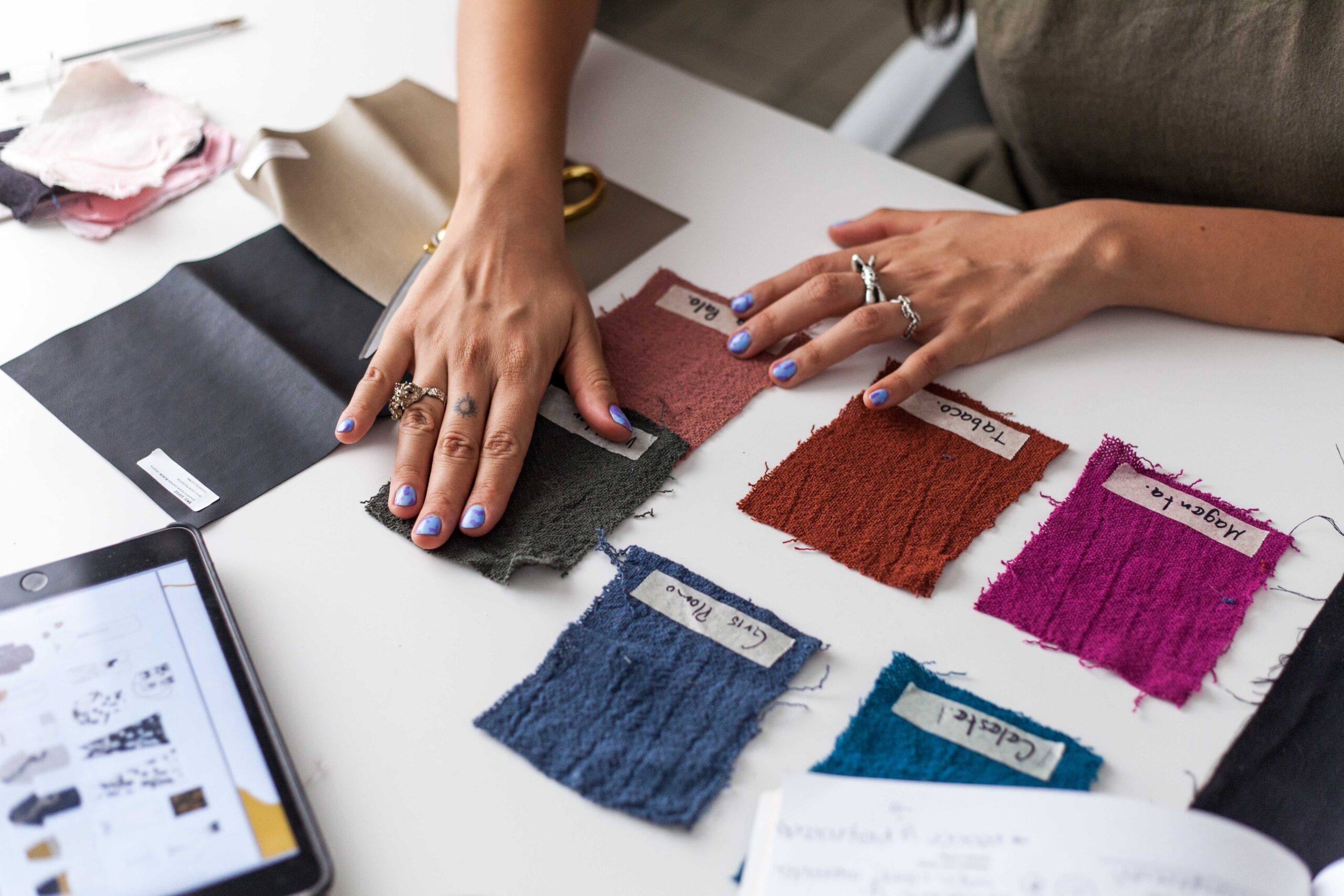The fashion industry is taking a new turn with Software as a Service (SaaS). In the past, fashion revolved around fabrics, colors, and designs. Now, it’s also about technology with SaaS platforms helping with inventory management., offering insights into customer preferences, and more. This article explores how SaaS is making its mark in fashion.
How SaaS Crossed Paths With Fashion
Fashion’s heartbeat has always been innovation. Yet, the recent pulse has a distinct, digital rhythm, thanks to Software as a Service (SaaS).
Supply Chain Transformation
Before, fashion had two main seasons. Now, brands like Zara release new designs every few weeks. This rapid pace demands tight logistics. SaaS platforms respond to this need. They connect designers, suppliers, and retailers instantly. Designs transition from sketch to store faster.
Data Shapes Fashion
Designers once relied solely on inspiration. Now, platforms like Edited offer real-time trend data. Brands see which styles or colors consumers want. Design decisions now blend creative intuition with hard data.
E-Commerce Evolution
Online shopping grew, but it lacked personal touch. SaaS platforms changed this. Tools from companies like Shopify analyze customer preferences. Shoppers then receive tailored product suggestions, making online shopping more intuitive.
Demand for Transparency
Today’s shoppers ask questions. They want to track a product’s journey. Platforms like Provenance answer this call by using technology like blockchain. Shoppers can trace an item from raw material to retail.
Brick-and-Mortar Reinvention
Physical stores aren’t obsolete; they’re evolving. Platforms like RetailNext optimize store layouts based on customer behavior. Uniqlo, for instance, uses technology in fitting rooms to suggest complementary items to shoppers.
Building Communities
Brands need loyal customers. Platforms like Yotpo collect customer reviews and foster online brand communities. Brands and customers now engage in continuous dialogue, shaping products and services.
Steps to Integrate SaaS In Your Fashion Venture
Planning the integration of Software as a Service (SaaS) into a budding fashion venture can seem like a complex task. However, breaking it down into actionable steps simplifies the journey. Let’s walk through this process.
- Bring everyone together: Start with your team. Meet and talk. What problems do they face? What tools do they wish they had? When everyone shares, you get a clear picture.
- Look beyond big names: Yes, popular SaaS tools are good. But there are smaller tools too. Some are made just for fashion businesses. Explore them. They might be a better fit.
- Talk to the tool makers: Why not speak to the people who made the SaaS? They can give tips. Maybe they have new features. A direct chat can help a lot.
- Appoint a SaaS expert: SaaS is important. So, make someone in your team the ‘SaaS Expert’. They will learn about tools, teach others, and keep up with updates.
- Ask everywhere for reviews: Don’t just read ads or official reviews. Go to social media. Ask other businesses. Their real experiences will tell you more.
- Combine different tools: One SaaS tool might not have everything. So, use parts from different tools. Like making an outfit, pick what fits best.
- Write down your experience: Keep a diary. Write what works and what doesn’t. This helps remember and make better choices later.
SaaS Tools for Fashion Startups
Incorporating SaaS tools equips fashion startups with the arsenal they need to not only survive but thrive. From the drawing board to the final sale, it’s about having the right tool for every task. Here’s a list of tools currently popular across different sectors in the fashion industry:
Design & Production
- CLO 3D: Fashion thrives on innovation. CLO 3D brings designs to life with its real-time 3D visualization. Designers tweak colors, modify patterns, and adjust fits on the go. No need for endless physical samples. Quick edits. Faster decisions.
- Techpacker: Miscommunication with manufacturers? Techpacker steps in. It crafts detailed tech packs, ensuring every stitch aligns with the designer’s vision. Clear specs lead to fewer errors. And that means smoother production runs.
Supply Chain & Inventory Management
- Aims360: Fashion’s fast. Aims360 keeps brands up to speed. This comprehensive tool weaves together production, sales, and even customer relationships. Track inventory. Monitor orders. Engage clients. All from one dashboard.
- Stitch Labs: Stock puzzles? Stitch Labs has the answers. It offers a real-time glance at inventory levels and sales trends. It even syncs with popular online shops. One platform, multiple channels. Stocking made smart.
E-commerce & Sales
- Shopify: Online shops need flair. Shopify delivers. Its intuitive interface lets brands craft standout online stores. Add products. Choose designs. Process payments. It’s the digital storefront every fashion brand dreams of.
- Vend: Physical store sales needn’t be complex. Vend simplifies the process. It’s the modern cash register, digital and efficient. Scan items. Process payments. Print receipts. Fast sales, happy customers.
Customer Engagement & Feedback
- Yotpo: Feedback fuels fashion. Yotpo makes gathering it easy. Collect reviews. Showcase ratings. Engage with customers post-purchase. Brands grow when they listen. Yotpo ensures they hear every word.
- Klaviyo: Email isn’t old school; it’s classic. Klaviyo transforms it into a fashion marketing powerhouse. Segment audiences. Send tailored messages. Track responses. It’s email marketing, but make it fashion.
How to Choose the Best SaaS Tool
Making the right SaaS tool choice is like selecting the perfect fabric for a dress. It must fit the brand’s contours, match its style, and be poised to dazzle. Here are the steps you can take to select tools that tailor success stitch by stitch.
Identify core needs
First, look inward. What does your brand need? A design assistant? An inventory wizard? Pinpoint gaps. That’s your start line. For instance, if you’re wrestling with real-time design tweaks, a tool like CLO 3D might be your answer.
Budget realities
Money matters. Know what you can spend. SaaS tools come with varying price tags. Some cater to deep pockets, while others are kind to startups. Align your choice with your wallet. But remember, cost shouldn’t compromise quality. Find the balance.
Ease of integration
A new tool should slide into your operations, not disrupt them. Can it work with your existing systems? Shopify, for example, offers plug-ins that mesh with other platforms. Such easy integrations save headaches down the road.
Scalability
Fashion is fluid. Today’s startup might be tomorrow’s trendsetter. Will the tool grow with you? As sales soar, tools like Stitch Labs can adapt, managing larger inventories and broader sales channels. Ensure your tool can stretch as you expand.
User friendliness
A tool is only as good as its usability. Complex systems waste time. Simple, intuitive platforms, on the other hand, speed up tasks. Tools like Vend don’t just look good; they work well. They turn sales into swift, seamless experiences.
Peer reviews & feedback
Who better to advise than those on the same path? Fellow fashion brands. They’ve tested the waters. Delve into their feedback. Platforms like Yotpo not only gather reviews for products but can also be used to assess the value of SaaS tools.
Customer support & training
Issues arise. Questions pop up. How responsive is the tool’s support team? Quick, helpful answers matter. Also, look for tools that offer robust training. Klaviyo, for instance, provides resources to maximize email marketing efforts.
Security concerns
Fashion data is precious. Protecting it is paramount. Ensure your chosen tool offers top-tier security measures. Encryptions, regular backups, and secure access are non-negotiables.
Test drive options
Words promise, but actions prove. Can you test the tool? Many SaaS solutions offer trial periods. Use them. Explore features. Gauge compatibility. A hands-on experience often clarifies if the tool truly fits.
The Next SaaS Wave in Fashion
As SaaS and fashion continue their partnership, the horizon hints at intriguing developments. Let’s navigate what the coming years might unveil.
- VR and AR transform shopping: SaaS platforms are integrating VR and AR. These tools can change shopping. Customers might soon try outfits virtually from their homes. Or they might use AR to visualize a dress or a shirt on them before buying.
- Sharper predictions with analytics: Current SaaS tools analyze existing data. The next step? Predicting. Brands will forecast trends, know their stock needs, and gauge consumer behaviors before they happen. Such foresight means less waste and more targeted offerings.
- Clearer sustainability paths: Consumers want sustainable fashion. Upcoming SaaS tools will track a product’s whole lifecycle. They’ll measure both environmental and social impacts. Brands can then share detailed reports. Consumers can choose with full knowledge.
- Marketing gets personal: Personalization will evolve beyond product suggestions. With SaaS insights, brands can craft marketing messages that connect with specific users. By understanding past purchases and interactions, they can speak directly to individual needs and interests.
- 3D printing meets design: SaaS is merging with 3D printing. Designers will move from a digital sketch to a real product faster. Immediate production reduces surplus inventory and promotes sustainable practices.
- Tools for real-time collaboration: Fashion operates globally. So, SaaS will offer better collaboration tools. Designers in Paris can connect with suppliers in Taiwan seamlessly. Everyone in the supply chain stays in sync.
- Direct lines to consumers: SaaS platforms will open channels for consumer feedback. Customers can share their thoughts, shape product designs, or even join the creative process. Brands stay attuned to their audience, ensuring they meet real needs and desires.
Overall, SaaS’s role in fashion has more chapters to write. The coming years will see deeper integration. Brands that embrace these SaaS innovations position themselves at the forefront of a responsive, consumer-centric fashion world.
Challenges and Solutions in SaaS Implementation for Fashion Companies
Although SaaS brings several benefits for fashion companies, most firms also experience challenges in its implementation. For instance:
- Training poses a challenge. Fashion teams, often steeped in design, find new digital tools jarring. The solution? Implement bite-sized training modules. Introduce one tool at a time, making adaptation less overwhelming.
- Brand identity also comes under threat. Standard software risks washing out a brand’s unique flair. Brands can combat this by investing in customizable SaaS platforms. These tools offer flexibility, letting brands keep their distinct touch.
- Data can swamp teams. SaaS tools churn out numbers relentlessly. This can distract more than inform. Fashion brands should prioritize clear, concise dashboard tools. This way, key insights stand out, not get buried.
- The personal connection with customers is vital. SaaS tools, while efficient, can create distance. Brands need to balance. Use SaaS for heavy-lifting tasks. Keep customer engagement genuine, direct, and personal.
- Scalability remains crucial. Brands evolve and grow. The software should too. Fashion companies must choose SaaS tools that scale easily. This foresight ensures smooth operations as business demands shift.
In all, integrating SaaS in fashion presents hurdles. But with strategic choices, fashion brands can meld tech seamlessly into their operations, driving efficiency without losing essence.
Conclusion
The integration of SaaS in fashion redefines the industry’s trajectory. Peering into the future, this synergy doesn’t merely hint at streamlined processes; it heralds a surge of unbridled innovation. The freedom SaaS tools offer allows fashion professionals to refocus on what they do best: create. Freed from mundane tasks, they can venture into unexplored design territories.
The ripple effect extends beyond the drawing boards. The global market becomes more accessible, opening doors to cultures and trends previously untouched. Customers, too, stand on the cusp of a revolution. Real-time data analytics empowers brands to curate individualized experiences, reshaping the shopping journey.
Moreover, the often tangled web of supply chains can expect clarity. This clarity translates to not just speed but an avenue for upholding ethical and sustainable practices. As consumers grow more discerning, brands equipped with SaaS tools can pivot towards responsible fashion more effectively.
In essence, as we look forward, the embrace of SaaS in fashion isn’t just a phase or an adaptation—it’s a dynamic reshaping. Brands navigating this path are not just surviving–they’re trailblazing, setting benchmarks for an industry on the brink of exciting evolution.



